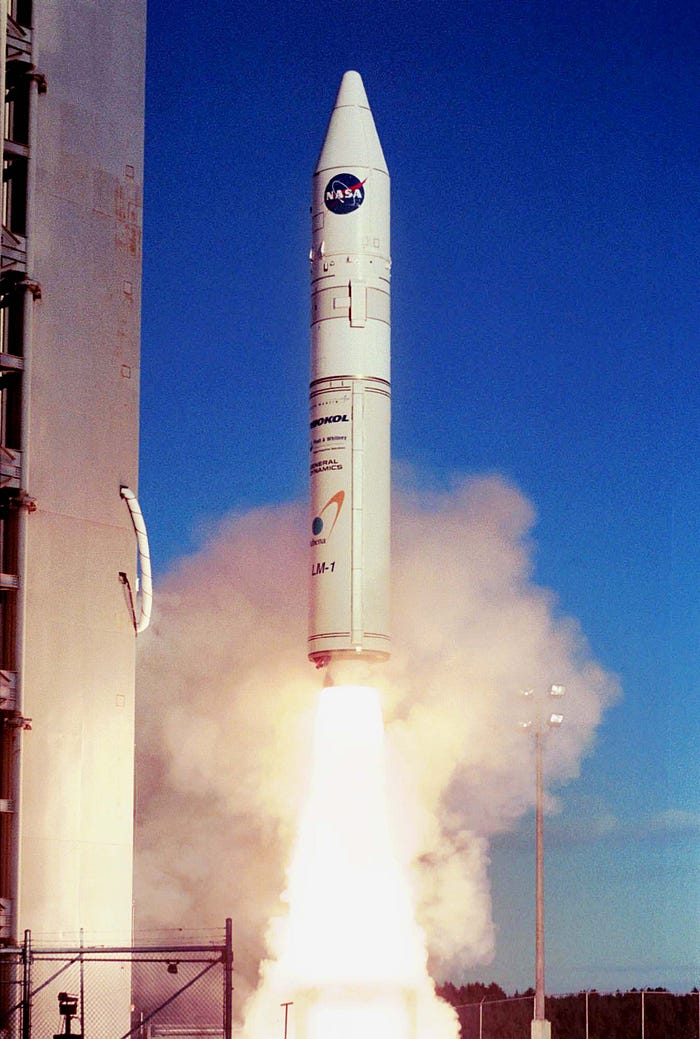September 21, 2014 ·
Rod Lyon is a fellow at ASPI and executive editor of The Strategist. Image courtesy of The White House. Hunting Nuclear Weapons From the Sky
One Pioneer’s Career Detecting Radiation From The Air
The 1960s produced a lot of technological innovation in the science of mass destruction. But testing nukes also required learning how to detect the telltale signs of radiation.
For survey teams flying in specially-equipped aircraft low above the Nevada desert, it was grueling and dangerous work. But what they learned not only taught us a lot about nuclear fallout, they helped establish environmental standards for both nuclear and non-nuclear power.
Jack Doyle, a former contractor who worked for the Atomic Energy Commission and provided background on the BREN Tower, spent his career developing and using remote sensing methods.
His efforts involved not just nuclear testing but also nuclear detective work.
Doyle’s first task when arriving at the Department of Energy’s Nevada Test Site in 1964 was programming remote sensors for the Phoebus nuclear rocket program. The Phoebus tests alone required more than 1,000 sensors to monitor its reactor, rocket nozzle, turbopumps and other apparatuses, all of which became so radioactive when fired that a drone locomotive hauled the machine to and from the test stand.
“We invented most of the technology we used back then,” Doyle recalled to War is Boring. “You couldn’t buy any of it off the shelf. It wasn’t until the 1980s that commercial equipment of the kind we used became available.”
Doyle’s work on nuclear rocket tests pushed him into handling remote sensing out in the field. He wound up flying the friendly skies in a very cramped, atom-sniffing plane.
An Aerial Measurement System plane, a successor to the ARMS aircraft. National Nuclear Security Administration photo
The flying Geiger counter
In 1960, EG&G—a major contractor for the Atomic Energy Commission—built a special aircraft to detect radiation, called the Aerial Radiological Measurement System.
The U.S. Geological Survey first used the small, modified Beechcraft Twin Bonanza to search for uranium deposits. But fallout from atmospheric nuclear tests in Nevada rendered such prospecting flights useless.
The USGS wanted no part in tracking bomb fallout, so the agency transferred the plane to the AEC. For years, the aircraft zipped to and fro tracking fallout plumes from nuclear tests above the desert.
“That Twin Bonanza was really crowded,” Doyle says.
“Between the pilot, two operators, four cameras and the detection gear we could barely turn around inside.” During their three- to four-hour flights, the crew skimmed above the ground at 400 feet. It wasn’t an easy job.
GPS was not available in the 1960s, and existing navigational aids lacked sufficient resolution. Instead, the plane carried a custom Litton inertial navigation system modified for greater accuracy. Later, the aircraft deployed microwave transponders developed by the oil industry.
The oddest instrument aboard actually detected radiation. The instrument’s sensor consisted of a very large, exquisitely machined block of sodium iodide. In other words, a big chunk of salt.
Gamma radiation from uranium, thorium, radon and other elements produced signature reactions within the big salt crystal. The reaction’s signature and intensity identified and quantified the detected isotope.
The plane’s instruments detected both ground and airborne radiation—if properly employed and if environmental conditions allowed for it. The pilot had to fly the aircraft carefully near the fallout clouds to avoid contaminating the sensitive detector.
Over the years, as electronics and computers decreased in size, the team replaced the Bonanza’s older equipment. Multi-channel analyzers and germanium sensors cooled by liquid nitrogen vastly improved the airborne platform’s sensitivity and data analysis capabilities.
Athena 1 rocket launching from Kodiak Island. NASA photo
Airborne detectives
Doyle’s flying detective work spread beyond studying fallout to detecting and tacking other—potentially deadly—radiation sources.
In 1969, a cobalt-60 radiation source went astray during transport—a recurring problem with the disposal of medical waste.
The ARMS crew located the object near Kansas City, hundreds of miles from its starting point. It had fallen into the bushes alongside the interstate when the truck carrying it had an accident. The radioactive object’s size, no bigger than a thick pen, shows how just sensitive the airborne detectors were.
The next year, an Athena space rocket fired from White Sands Missile Range in New Mexico malfunctioned and crashed deep inside Mexican territory, sparking an international incident. The missile carried a small radioactive source designed to measure the thickness of the reentry shielding tested during the flight.
Though the crash left a 50-foot-wide, 15-foot-deep crater, authorities called in the flying radiation lab to locate the crash site and survey the area.
It wasn’t just detecting radiation from friendly nukes. The early 1970s brought the fear of suitcase bombs and nuclear terrorism. Doyle and the ARMS crew began search exercises over American soil for nuclear weapons.
This proved challenging. Unexploded nukes don’t give off much radiation. After all, they must be safe for troops to handle.
But their signature shine still leaves a mark on quiet parts of the electromagnetic spectrum. The team didn’t discover any hidden nukes. However, the flights produced some unexpected and interesting results.
A survey over Chicago picked up one very hot source in an otherwise unremarkable factory—that turned out to make the gas mantles for Coleman camping lanterns. Thorium dioxide gives them their brilliant glow when heated.
Other ARMS flights helped establish background radiation levels throughout the United States, as well as determining normal readings around nuclear power plants. This data helped the Nuclear Regulatory Commission establish acceptable standards for radiation emissions.
These flights also revealed another unexpected source of radioactive contamination—fly-ash heaps near coal-fired power plants. Burnt coal residue turns out to be nasty in more ways than one.
These days Doyle patiently answers visitor questions as a docent at the National Atomic Testing Museum in Las Vegas. But those who continue his work don’t keep him at arms’ length.
https://d262ilb51hltx0.cloudfront.net/max/600/1*rhxLaMxKQ8kqHjLjM7dqvA.jpeghttps://d262ilb51hltx0.cloudfront.net/max/600/1*KEMJoeqCevANyQAjP6a_SA.jpeg


No comments:
Post a Comment